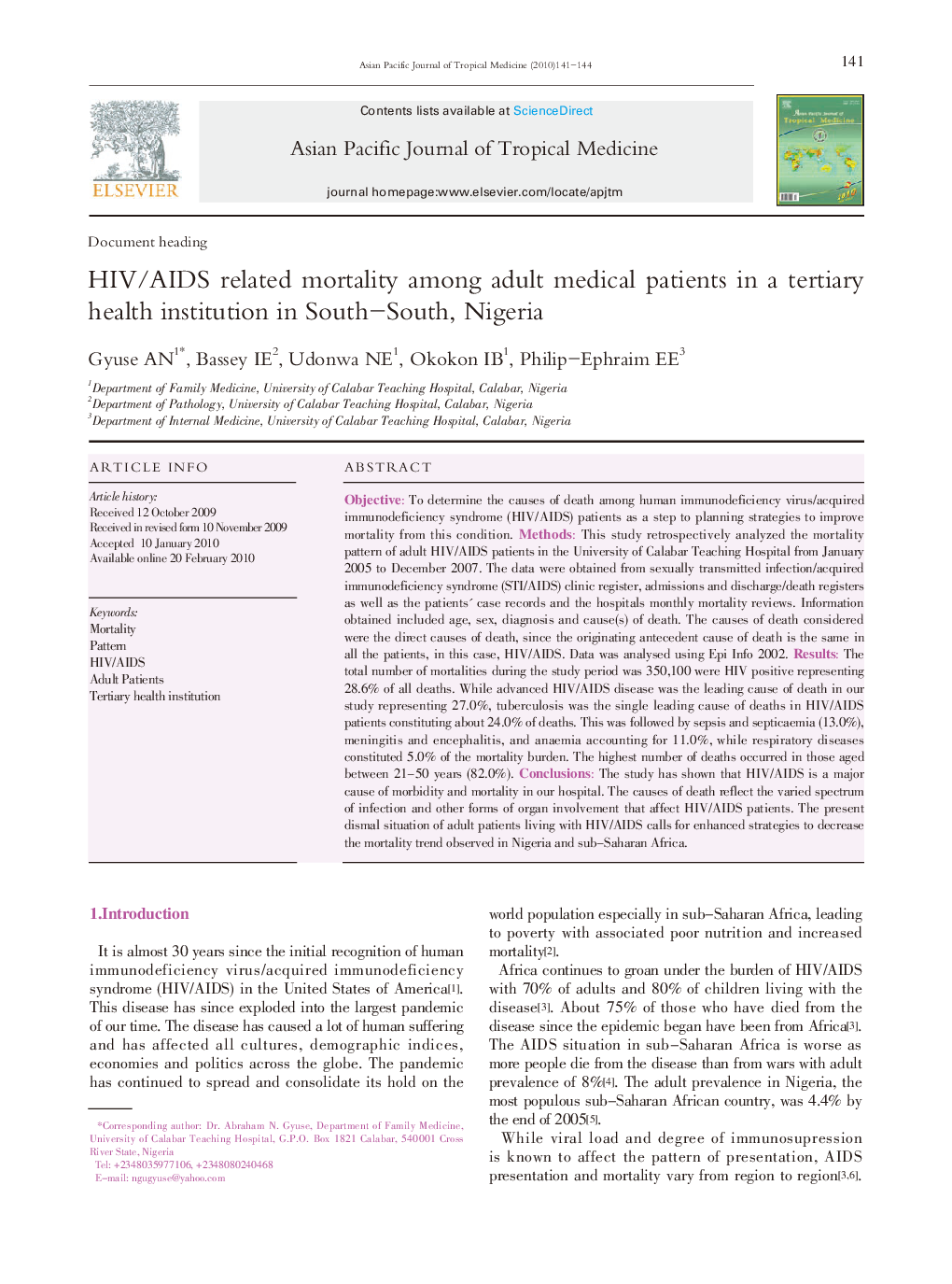| Article ID | Journal | Published Year | Pages | File Type |
|---|---|---|---|---|
| 3456774 | Asian Pacific Journal of Tropical Medicine | 2010 | 4 Pages |
ObjectiveTo determine the causes of death among human immunodeficiency virus/acquired immunodeficiency syndrome (HIV/AIDS) patients as a step to planning strategies to improve mortality from this condition.MethodsThis study retrospectively analyzed the mortality pattern of adult HIV/AIDS patients in the University of Calabar Teaching Hospital from January 2005 to December 2007. The data were obtained from sexually transmitted infection/acquired immunodeficiency syndrome (STI/AIDS) clinic register, admissions and discharge/death registers as well as the patients' case records and the hospitals monthly mortality reviews. Information obtained included age, sex, diagnosis and cause(s) of death. The causes of death considered were the direct causes of death, since the originating antecedent cause of death is the same in all the patients, in this case, HIV/AIDS. Data was analysed using Epi Info 2002.ResultsThe total number of mortalities during the study period was 350,100 were HIV positive representing 28.6% of all deaths. While advanced HIV/AIDS disease was the leading cause of death in our study representing 27.0%, tuberculosis was the single leading cause of deaths in HIV/AIDS patients constituting about 24.0% of deaths. This was followed by sepsis and septicaemia (13.0%), meningitis and encephalitis, and anaemia accounting for 11.0%, while respiratory diseases constituted 5.0% of the mortality burden. The highest number of deaths occurred in those aged between 21–50 years (82.0%).ConclusionsThe study has shown that HIV/AIDS is a major cause of morbidity and mortality in our hospital. The causes of death reflect the varied spectrum of infection and other forms of organ involvement that affect HIV/AIDS patients. The present dismal situation of adult patients living with HIV/AIDS calls for enhanced strategies to decrease the mortality trend observed in Nigeria and sub-Saharan Africa.
